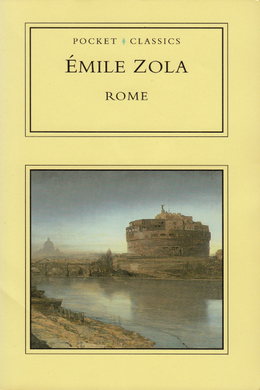
-
EPUB 689 KB
-
Kindle 973 KB
-
Support epubBooks by making a small $2.99 PayPal donation purchase.
Description
Three years after his visit to Lourdes, Abbé Pierre Froment has written an ecumenical work, New Rome, that has been placed on the Index. In an attempt to have this veto lifted he travels to Rome, where he is subjected to a variety of subtle delaying tactics designed to bring him to contrition and resignation. His enforced wait,which stretches into months, is a pretext for the novelist to develop a finely-documented travelogue, as we accompany the priest to every corner of the Eternal City. Pierre Froment at length obtains an audience with Pope Leo XIII. Will the Holy Father recognize the worth of this book, and the relevance of progressive thought to the priestly vocation?
1000 pages with a reading time of ~15.25 hours (250154 words), and first published in 1896. This DRM-Free edition published by epubBooks, 2017.
Community Reviews
There are currently no other reviews for this book.
Excerpt
The train had been greatly delayed during the night between Pisa and Civita Vecchia, and it was close upon nine o’clock in the morning when, after a fatiguing journey of twenty-five hours’ duration, Abbe Pierre Froment at last reached Rome. He had brought only a valise with him, and, springing hastily out of the railway carriage amidst the scramble of the arrival, he brushed the eager porters aside, intent on carrying his trifling luggage himself, so anxious was he to reach his destination, to be alone, and look around him. And almost immediately, on the Piazza dei Cinquecento, in front of the railway station, he climbed into one of the small open cabs ranged alongside the footwalk, and placed the valise near him after giving the driver this address:
“Via Giulia, Palazzo Boccanera.”*
- Boccanera mansion, Julia Street.
It was a Monday, the 3rd of September, a beautifully bright and mild morning, with a clear sky overhead. The cabby, a plump little man with sparkling eyes and white teeth, smiled on realising by Pierre’s accent that he had to deal with a French priest. Then he whipped up his lean horse, and the vehicle started off at the rapid pace customary to the clean and cheerful cabs of Rome. However, on reaching the Piazza delle Terme, after skirting the greenery of a little public garden, the man turned round, still smiling, and pointing to some ruins with his whip,
“The baths of Diocletian,” said he in broken French, like an obliging driver who is anxious to court favour with foreigners in order to secure their custom.
Then, at a fast trot, the vehicle descended the rapid slope of the Via Nazionale, which dips down from the summit of the Viminalis,* where the railway station is situated. And from that moment the driver scarcely ceased turning round and pointing at the monuments with his whip. In this broad new thoroughfare there were only buildings of recent erection. Still, the wave of the cabman’s whip became more pronounced and his voice rose to a higher key, with a somewhat ironical inflection, when he gave the name of a huge and still chalky pile on his left, a gigantic erection of stone, overladen with sculptured work-pediments and statues.
- One of the seven hills on which Rome is built. The other six are the Capitoline, Aventine, Quirinal, Esquiline, Coelian, and Palatine. These names will perforce frequently occur in the present narrative.
“The National Bank!” he said.
Pierre, however, during the week which had followed his resolve to make the journey, had spent wellnigh every day in studying Roman topography in maps and books. Thus he could have directed his steps to any given spot without inquiring his way, and he anticipated most of the driver’s explanations. At the same time he was disconcerted by the sudden slopes, the perpetually recurring hills, on which certain districts rose, house above house, in terrace fashion. On his right-hand clumps of greenery were now climbing a height, and above them stretched a long bare yellow building of barrack or convent-like aspect.
“The Quirinal, the King’s palace,” said the driver.
Lower down, as the cab turned across a triangular square, Pierre, on raising his eyes, was delighted to perceive a sort of aerial garden high above him–a garden which was upheld by a lofty smooth wall, and whence the elegant and vigorous silhouette of a parasol pine, many centuries old, rose aloft into the limpid heavens. At this sight he realised all the pride and grace of Rome.
“The Villa Aldobrandini,” the cabman called.
Then, yet lower down, there came a fleeting vision which decisively impassioned Pierre. The street again made a sudden bend, and in one corner, beyond a short dim alley, there was a blazing gap of light. On a lower level appeared a white square, a well of sunshine, filled with a blinding golden dust; and amidst all that morning glory there arose a gigantic marble column, gilt from base to summit on the side which the sun in rising had laved with its beams for wellnigh eighteen hundred years. And Pierre was surprised when the cabman told him the name of the column, for in his mind he had never pictured it soaring aloft in such a dazzling cavity with shadows all around. It was the column of Trajan.
